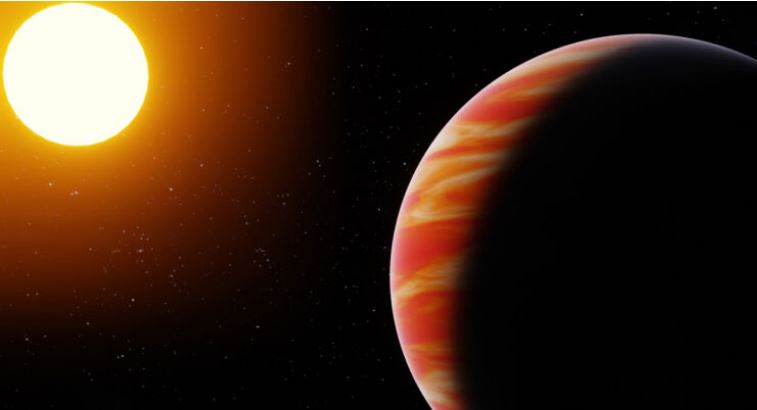The Great Silence is ending. We have spent seventy years staring into the cosmic dark, listening for a whisper, assuming that any intelligence vast enough to cross the gulf between stars would send a gentle greeting: a simple prime number sequence, a polite acknowledgement of existence. What if, instead, the initial contact was not a hello, but an overwhelming, inchoate scream? What if the first interstellar message was a colossal, unmanageable data dump—a silent, overwhelming flood of zettabytes—and the object that delivered it was already among us?
This is the chilling proposition presented by the sudden, panicked lurching of global governance regarding extraterrestrial affairs, a bureaucratic spasm that coincides almost perfectly with the anomalous entry and behavior of the cosmic interloper designated 3I/Atlas. The narrative has shifted from the hypothetical to the terrifyingly immediate. We are no longer waiting for contact; we are struggling to manage the data deluge left by an unknown, possibly automated, machine that briefly paused in our solar system before silently moving on.
The Erratic Dance of the Interstellar Sentinel
In the cloistered world of astrodynamics, every celestial body adheres to the cold logic of gravity. Comets and asteroids are predictable prisoners of physics. Yet, 3I/Atlas, first identified as a comet but quickly revealing a profound unwillingness to behave as one, has rewritten its own orbital script. It is an interstellar object, meaning it originated from beyond our sun’s gravitational influence, a lineage it shares only with the bizarre ‘Oumuamua, which also defied categorization but, crucially, did so with a silent, distant grace.
3I/Atlas, however, seems to have been driven by purpose rather than inert motion.
Traditional comets maintain a steady, predictable pace, only showing small, explainable accelerations due to outgassing. But Atlas behaved like a machine engaging and disengaging propulsion. It experienced a sharp, unexplained acceleration shortly after entering the system, followed by baffling periods of deceleration. Its trajectory was not the smooth arc of a ballistic missile but the hesitant, calculated movement of a reconnaissance drone.
Most tellingly, it lingered. It spent unusually long, almost stationary periods near the gas giants, Saturn and Jupiter. Conventional comets merely sling-shot past such massive bodies, their speed dictated by the gravitational well. Atlas appeared to be loitering, performing a focused, intensive survey. This behavior, observed repeatedly near Uranus and Neptune, shattered the comfortable classification of the object as a mere icy vagabond. It was behaving like a mission profile, not a natural phenomenon. It was pausing to observe, to record, to download.
The final insult to astronomical orthodoxy was its survival near the Sun. The power of a solar ejection—a massive burst of incandescent stellar plasma—is enough to vaporize or disintegrate all but the densest bodies. Yet, Atlas, a body initially classified as a “dirty snowball” comet, passed through this crucible and emerged structurally intact. This defiance of stellar mechanics suggested an internal resilience, a shield, or a construction quality far beyond anything natural. It implied architecture, intent, and engineering.
The hypothesis, now gaining traction among independent astrophysicists like Sydney-based Mickey Devlin, is chillingly simple: 3I/Atlas is not a comet. It is a technological construct, an unmanned interstellar probe, designed for deep-system reconnaissance.
The Zettabyte Enigma: A Message from the Void

The evidence for the object’s artificial nature only intensified when the colossal, unprecedented information transfer occurred. Sometime during the period of Atlas’s anomalous loitering, global space agencies detected a profound, incredibly powerful signal directed toward Earth. It was not a faint, modulated carrier wave, but a dense, wide-band transmission containing a data payload estimated to be in the realm of zettabytes.
To put this amount of information into perspective, a zettabyte is roughly equivalent to every video ever streamed on the internet, or the sum total of all digital data created globally over several years. Receiving such a colossal, dense message implies a technology that treats information compression and transmission on a scale we can barely conceptualize. Our most ambitious decryption efforts would take decades, maybe even centuries, to fully process this data, even with breakthrough artificial intelligence assistance.
What is contained within that encoded archive? This is the ultimate, paralyzing question. Given the technological disparity implied by the zettabyte transfer capability, the communication could be anything from a threat of cosmic dominance to a generous offer of galactic citizenship. It might contain the encyclopedic knowledge of their civilization, a full map of the cosmos, or merely the raw, unprocessed data collected from our star system, the equivalent of an interstellar vacation slideshow we were never meant to see.
The scale of the message is intrinsically linked to the scale of the sender. For a civilization capable of transmitting zettabytes of information across interstellar distances, Earth is a geological mote, a fleeting curiosity. This realization injects a cold, hard dose of existential dread into the contact scenario. The lessons of our own history, the brutal and unequal encounters between the technologically advanced Spanish and the indigenous peoples of the Americas, or the colonial conquests of the Anglo-Saxons—offer a dark mirror. When technology gaps are vast, the outcome is rarely one of equal cooperation. Our only reliance must be on the benevolence or, failing that, the profound indifference of the alien intelligence.
The Protocol of Fear and the UN’s Panic
The most damning evidence that something profoundly changed in the calculus of potential contact is found not in telescope readings, but in the frantic, erratic policy shifts of the United Nations.

For years, the idea of an extraterrestrial contact body was a polite formality, a bureaucratic exercise in preparedness, safely assumed to be irrelevant for generations. The department, established in 2013, maintained a symbolic presence, periodically appointing an envoy, a person chosen to speak on behalf of humanity, signaling confidence and control.
Then, the sudden, bewildering rupture: in 2022, the UN contact department was abruptly and quietly closed, and the authority to mediate potential contact was unceremoniously transferred to the Pope. This unprecedented delegation, bypassing political and scientific structures entirely for a religious authority, speaks volumes. It suggests that the decision-makers were suddenly confronted with something they perceived not as a scientific challenge, but as a deep, metaphysical crisis. a potential existential threat or a spiritual upheaval that demanded the gravitas of an ancient moral institution.
Now, in 2024, the cycle of panic repeats, with renewed, desperate calls to re-establish a formal UN contact group and finalize a formal protocol. This back-and-forth—the creation, the closure, the delegation, and the urgent resurrection—is the institutional signature of absolute systemic shock. It is the action of world governments suddenly realizing that the threat matrix has changed from ‘possible someday’ to ‘imminent now,’ spurred by the inescapable reality of the zettabyte transfer and the presence of the Atlas craft.
The fear is palpable: that we are unprepared not for the arrival of the aliens, but for the information they have already deposited. We fear not the unknown, but the sudden, overwhelming knowledge of our own cosmic insignificance.
The Paranoia of Planetary Quarantine
If 3I/Atlas is a machine, what was its mission profile? The most unsettling interpretation is that it was designed to study the solar system, but specifically to avoid Earth.
Astrophysicist Mickey Devlin and his colleagues believe the flight path provides clues: the repeated, localized braking near the gas giants was intentional, indicating moments of deployment. The hypothesis suggests Atlas is a mothership that released dozens of smaller, high-velocity probes near Saturn, Jupiter, and possibly Mars. These probes would conduct high-resolution, low-signature surveys of the planetary environments and their moons.
But what about the inner system? After surviving its perilous pass near the Sun, Atlas veered towards Mars, then, according to some analyses confirmed by experts like Avi Loeb and Michio Kaku, it adjusted course toward the Moon. The trajectory avoids a close encounter with Earth.
This suggests a deliberate act of planetary quarantine. The creators of Atlas, having the technological capacity to transmit zettabytes of data, would certainly be able to detect the intense, persistent, and “noisy” electromagnetic signatures of human civilization. We are a beacon of television broadcasts, radio traffic, and radar emissions—we are exceptionally loud in the cosmic dark.
If the mission is pure, passive reconnaissance, the highest directive might be to avoid contact that could lead to an “escalation.” In this reading, our very existence—our noisy, confrontational, unpredictable humanity—is the variable the alien intelligence decided to sideline. We are too volatile, too risky, a biological contaminant to be surveyed from a safe distance, not approached directly. This is a profoundly humbling and dystopian concept: we are being treated as a zone of biological and behavioral instability that is best left unprovoked.
The Celestial Glitch and the ISS Observer
Adding a layer of in-system anxiety to the interstellar mystery is the perennial phenomenon of the celestial glitch—the sudden interruption of live feeds from the International Space Station.
One widely reported incident saw the NASA live stream abruptly cutting to a technical difficulty screen moments after a bright, unidentified flying object appeared to move beneath the ISS orbit. While the official explanation defaults to “orbital debris” or “secret satellite,” the consistency of the response—the immediate, unexplained cut to black—fuels speculation that these events are not random technical failures, but deliberate attempts to excise data points from the public record.
If we connect this to the Atlas scenario, the UFO captured near the ISS could be interpreted not as an arbitrary alien visitor, but as one of the deployed scouting probes, a smaller vehicle released near Mars or the inner system, conducting a high-altitude, passive surveillance of Earth’s atmosphere and orbital structures.
The problem, as armchair astronomers and analysts quickly pointed out, is the geometry. The object moved in a way that defied simple physics: it appeared to enter the ISS’s shadow twice, which is geometrically impossible. This suggests either a highly complex, non-ballistic trajectory (i.e., controlled flight) or an optical illusion caused by an object of immense size and reflectivity, far larger than typical space junk. The ISS incident adds a disturbing urgency to the narrative: the interstellar machine may be gone, but its automated eyes are still watching us, right here, right now, moving silently in the geometry of the unknown.
The End of Cosmic Isolation
The story of 3I/Atlas is the story of our shattered cosmic isolation. The comfortable notion that contact was a century away, that we had time to mature as a species, has been violently refuted by the speed of an interstellar machine and the sheer size of the information payload it deposited.

Whether Atlas is, in reality, a phonolitic porphyry rock that merely displayed the most bizarre, statistically improbable cometary behavior ever recorded, or whether it is, as its behavior suggests, an unmanned technological sentinel from a civilization far beyond our reckoning, the implications are the same.
The message is here. The zettabytes of compressed data now sit on servers, an encrypted, ticking time bomb of knowledge. When—not if—we achieve the computational power to crack the code and open the archive, we will be confronted with the unvarnished reality of the universe. It will be the moment of truth for humanity. Will the message contain a blessing, an encyclopedia of galactic life, or the simple, cold instruction manual for our own surrender?
We are left staring into the dark, not listening for a signal, but struggling to decrypt the one that has already been delivered, contemplating the chilling possibility that the Age of Contact began not with a bang, but with a silent, zettabyte-sized data transfer from a machine that saw us, dismissed us, and then moved on.

















